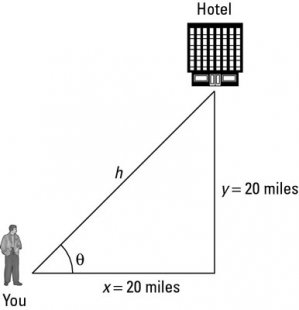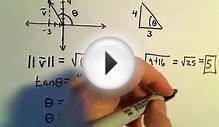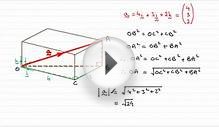
In physics, sometimes you have to find the angle and magnitude of a vector rather than the components. To find the magnitude, you use the Pythagorean theorem. And to find
you use the inverse tangent function (or inverse sine or cosine).
For example, assume you’re looking for a hotel that’s 20 miles due east and then 20 miles due north. From your present location, what is the angle (measured from east) of the direction to the hotel, and how far away is the hotel? You can write this problem in vector notation, like so:
Step 1: (20, 0)
Step 2: (0, 20)
When adding these vectors together, you get this result:
(20, 0) + (0, 20) = (20, 20)
The resultant vector is (20, 20). That’s one way of specifying a vector — use its components. But this problem isn’t asking for the results in terms of components. The question wants to know the angle and distance to the hotel.

Using the angle created by a vector to get to a hotel.
In other words, looking at the above figure, the problem asks,
If you know a vector’s vertical and horizontal components, finding the vector’s magnitude isn’t so hard because you just need to find the hypotenuse of a right triangle. You can use the Pythagorean theorem (2 + 2 = 2), solved for :
Plugging in the numbers gives you
Keep in mind that when you know the horizontal and vertical components of a vector, you can use the tangent to find the angle because
All you have to do is take the inverse tangent of /:
Suppose you drive 20 miles east and 20 miles north. Here’s how you find
the angle between your original position and your final one:
So the hotel is about 28 miles away at an angle of 45 degrees.
Be careful when doing calculations with inverse tangents, because angles that differ by 180 degrees have the same tangent. When you take the inverse tangent, you may need to add or subtract 180 degrees to get the actual angle you want. The inverse tangent button on your calculator will always give you an angle between 90 degrees and –90 degrees. If your angle is not in this range, then you have to add or subtract 180 degrees.
For this example, the answer of 45 degrees must be correct. But consider a situation in which you’d need to add or subtract 180 degrees: Suppose that you walk in completely the opposite direction to the hotel. You walk 20 miles west and 20 miles south ( = –20 miles, = –20 miles), so if you use the same method to work out the angle, you get the following:
YOU MIGHT ALSO LIKE












